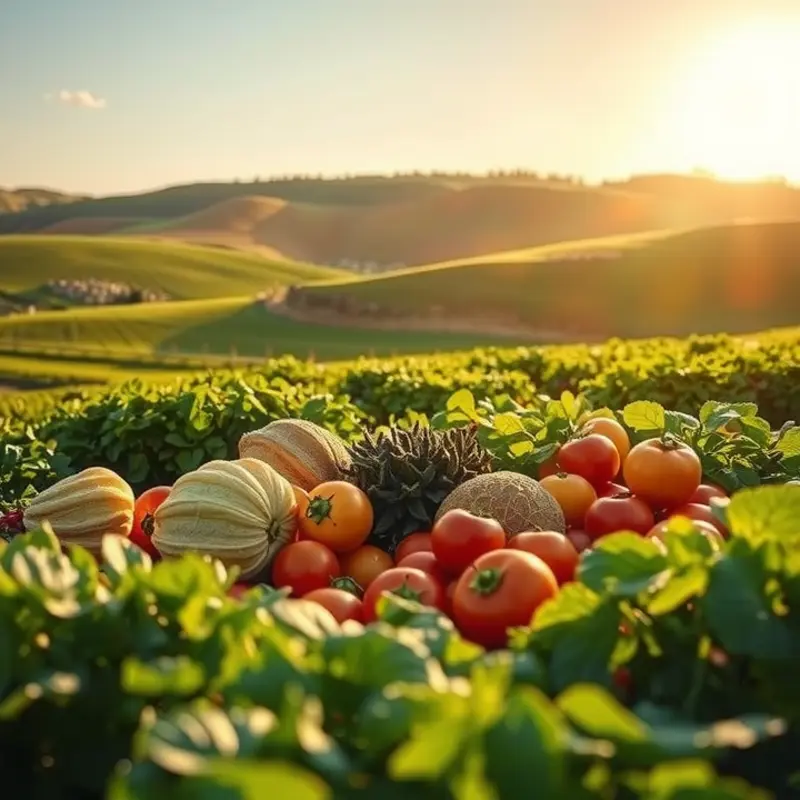Cooking without vinegar doesn’t have to compromise flavor or creativity in the kitchen. For home cooks and the dietary-conscious, discovering alternatives can open up a world of culinary possibilities. This guide provides practical substitutes, easy ingredient swaps, and flexible solutions that enhance your dishes without vinegar, making it easy to maintain flavorful meals tailored to your needs.
Savory Substitutes: The Best Vinegar Alternatives

Cooking without vinegar doesn’t mean sacrificing flavor. A variety of substitutes can mimic the tangy zing of vinegar, allowing your dishes to shine in their unique ways. Let’s delve into some of the best alternatives and how to incorporate them effectively.
Citrus Juices offer a burst of freshness and acidity reminiscent of vinegar. Lemon and lime juice are the most common, providing a bright flavor. They work well in salad dressings, marinades, and even soups. To replicate vinegar’s acidic punch, start with a one-to-one replacement, adjusting to taste.
Orange juice brings a subtler tang with a hint of sweetness, ideal for sweet-and-sour sauces and fruit-based dressings. When using citrus juices, remember they can vary in acidity and sweetness. Taste-testing is your best friend to achieve the desired balance.
Fermented Options like kombucha can be another fantastic alternative. With its naturally tangy profile, kombucha offers complexity to dressings and deglazing sauces. Its probiotics are an added benefit, supporting gut health. Fermented foods can be useful substitutes that provide not just flavor but potential health advantages. Explore more on how to use probiotics in your cooking here.
Broths and Stocks are versatile alternatives, especially for savory dishes. While not acidic, their depth of flavor can substitute vinegar in stews or braises. Chicken or vegetable broth adds a savory backbone, while mushroom broth contributes umami richness. Pairing these with a squeeze of citrus can approximate a balance between acidity and savoriness.
Another angle is Wine and Vermouth. Dry white wine or vermouth adds acidity and complexity akin to vinegar, suitable for deglazing pans and adding depth to sauces. As they reduce, their flavors concentrate, enhancing culinary profiles. Use them sparingly, starting with half the amount you would vinegar, and remember to allow some cooking time to burn off the alcohol.
In desserts and baking, Buttermilk and Yogurt can replace vinegar in recipes needing a tangy lift. They introduce creaminess and a slight tartness, enhancing moistness in cakes or muffins. These dairy options can be slightly more acidic, so use them thoughtfully, considering the texture they will bring to your sweets.
Lastly, Tamarind Paste offers a tanginess perfect for curries, chutneys, or BBQ sauces. Its sour-sweet character brings a unique twist to dishes traditionally calling for vinegar, particularly in Asian and South American cuisines. Start with small amounts, as tamarind’s potent flavor can quickly overpower.
Exploring these substitutes broadens your culinary toolkit, allowing for creativity in vinegar-free cooking. Taste, adjust, and enjoy discovering new depths of flavor in your cuisine, one substitute at a time.
Creative Cooking Techniques Without Vinegar

When it comes to cooking without vinegar, creativity becomes essential in building flavors. One effective technique is marinating with citrus juices or yogurt. Citrus juices, such as lemon, lime, or orange, are packed with bright acidity that can tenderize meats and infuse vegetables with a zesty flavor. A marinade of lime juice, chopped cilantro, garlic, and olive oil creates a refreshing balance perfect for chicken or shrimp.
Yogurt, particularly plain or Greek varieties, offers a creamy texture alongside its mild acidity. It acts as a tenderizer and adds a subtle tang to meats and vegetables. For a simple yogurt marinade, mix yogurt with spices such as cumin, coriander, and turmeric, which complements chicken and lamb well.
Creating vinegar-free salad dressings relies on alternative acids like citrus or tamarind paste. Mix fresh lemon juice with a splash of olive oil, a touch of honey, and a dash of mustard. This blend provides a tangy, sweet balance. Alternatively, tamarind paste, diluted with water, offers a fruity tartness. Combine it with soy sauce and sesame oil for a distinctly Asian-inspired dressing.
Balancing flavors involves enhancing umami or sweetness when vinegar is absent. Umami-rich ingredients like mushrooms, tomatoes, and aged cheeses add depth. Incorporate dried mushrooms into broths or tomato paste into sauces to boost umami profiles. Similarly, miso paste, with its savory complexity, can enrich soups and dressings.
Sweetness, often balancing acidity, can be adjusted using honey, agave, or fruit juices. Roasting vegetables like carrots or beets brings out their natural sweetness. Adding caramelized onions or roasted garlic to dishes can further enhance this sweetness, offering a harmonious balance with savory elements.
For those seeking innovative preparation methods, consider sous-vide cooking for deep flavor penetration and moisture retention. This technique, despite requiring more time, unveils subtle flavors that vinegar might overshadow. Vacuum-sealing ingredients with herbs and spices allows for a gradual infusion of flavors, elevating the final dish.
These creative techniques replace vinegar seamlessly, with every ingredient thoughtfully used to manifest harmonious and satisfying flavors. Whether integrating citrus-based marinades or crafting umami-rich broths, these methods pave the way for culinary creativity.
Visit Hold My Carbs blog for more tips on enhancing flavors without traditional ingredients.
Final words
Embracing a vinegar-free approach to cooking opens up a realm of delicious options. By utilizing creative substitutes and techniques, you can enhance flavors in your meals without sacrificing quality. From aromatic citrus fruits to umami-rich broths, the possibilities are endless. Remember, cooking is about experimenting, so don’t hesitate to play with flavors and discover what works best for your taste buds. By shifting your perspective and trying new combinations, you’ll expand your culinary repertoire and continue to delight in the art of cooking.







